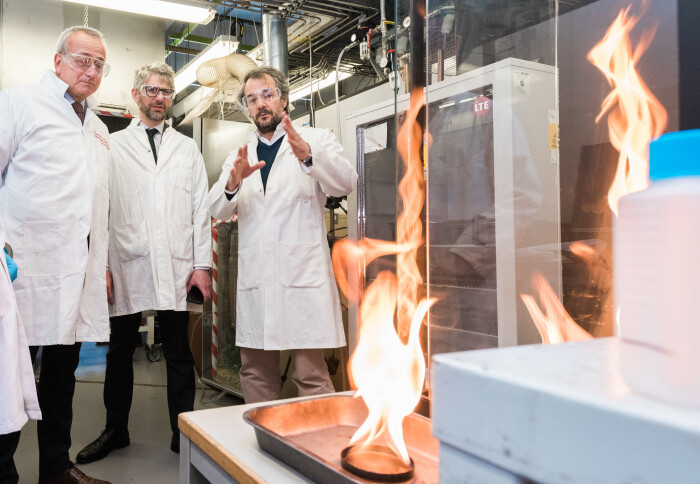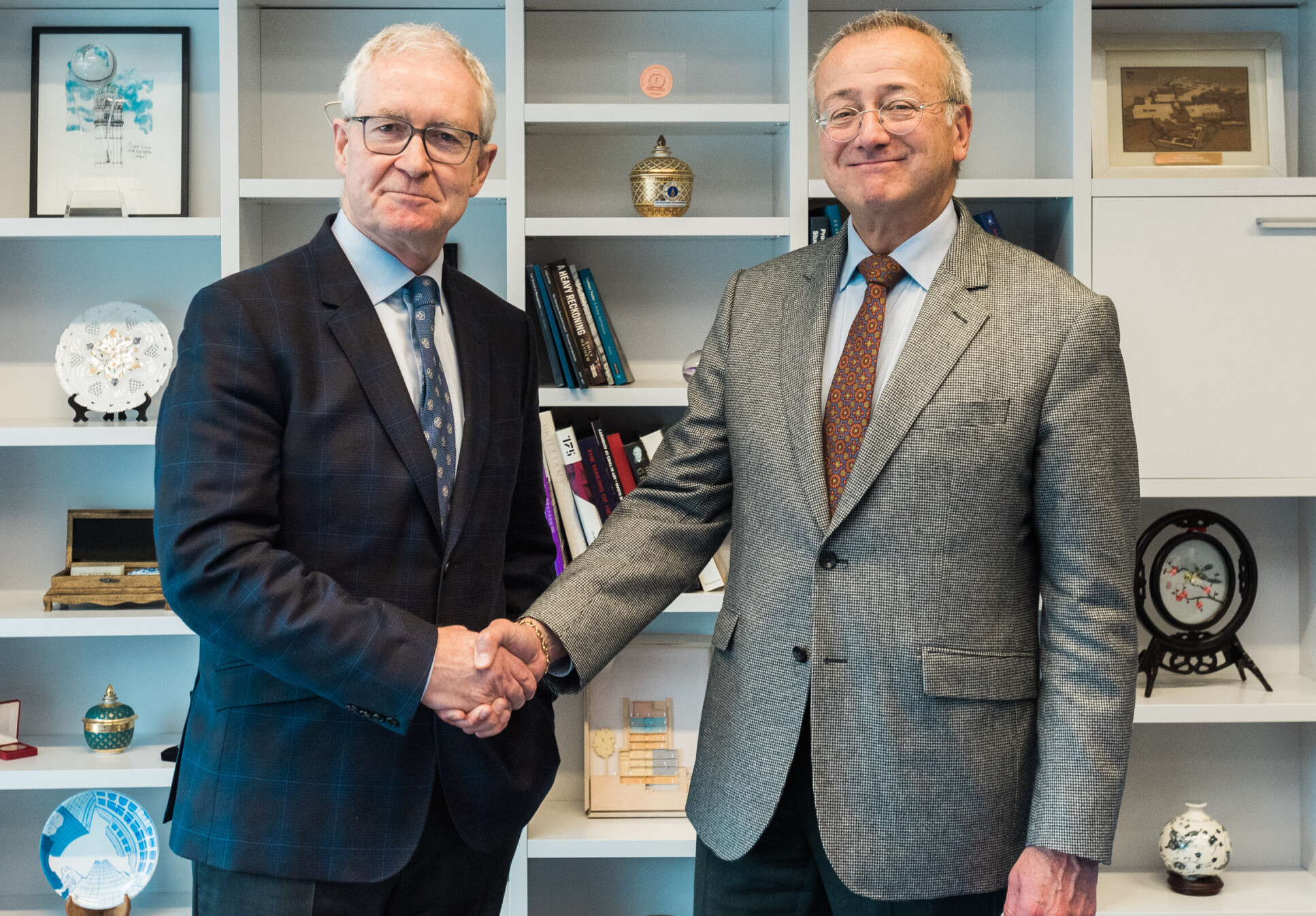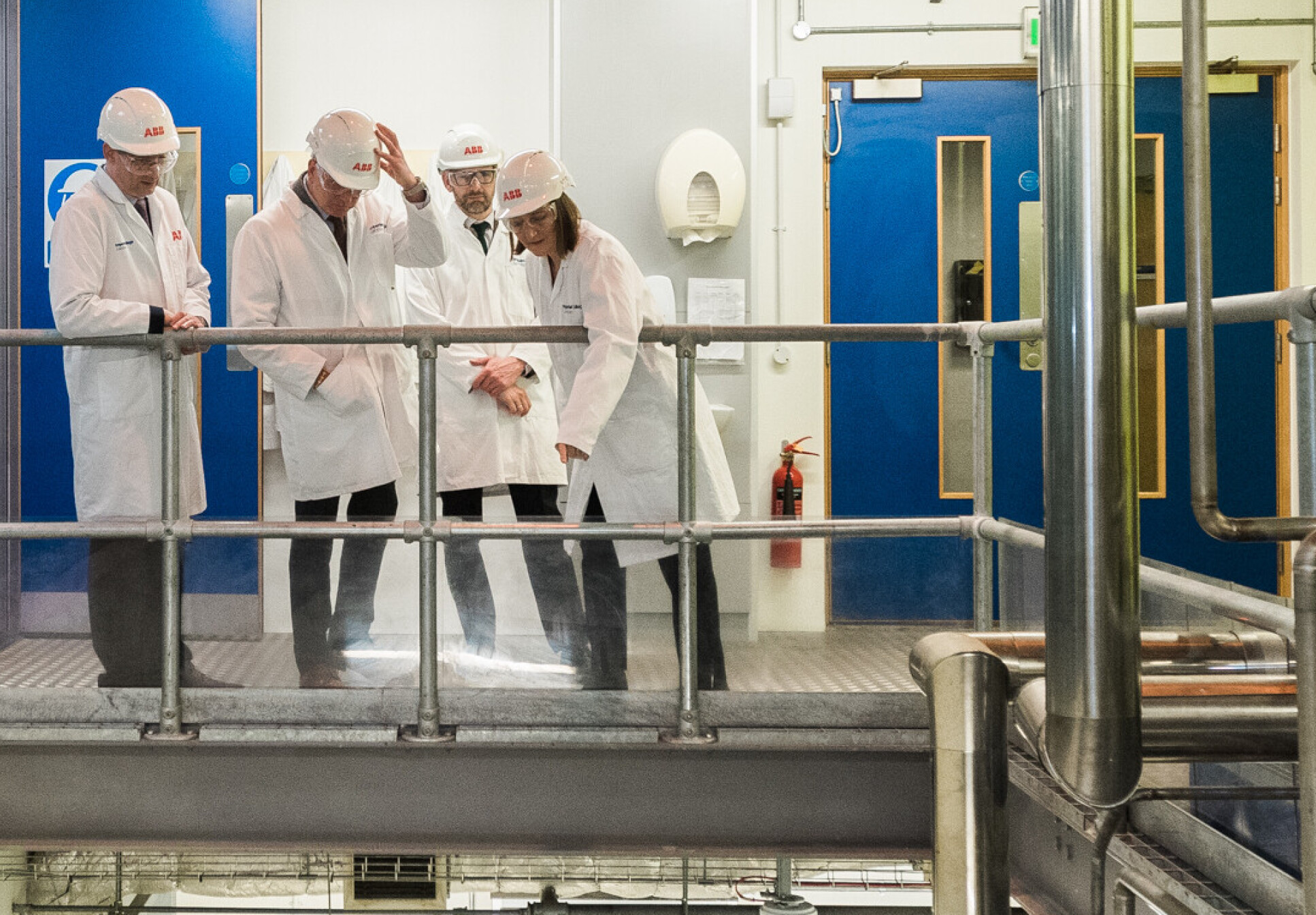New EU Ambassador visits Imperial

Professor Guillermo Rein explains the work of the Hazelab.
The new EU Ambassador visited the College last week to see how Imperial researchers work with European partners to address shared challenges.
Mr Pedro Serrano, who has been the European Union Ambassador to the United Kingdom since November 2022, visited the College last week to meet the Imperial community. President Professor Hugh Brady welcomed the Ambassador and discussed the importance of European partnerships and collaboration to UK education and science.

Mr Serrano saw demonstrations of the work of Professor Guillermo Rein, Professor of Fire Science, and his students in the Imperial Hazelab. They discussed how the group works with partners across Europe and beyond to reduce the worldwide burden of accidental fires and their impact on people, property and the environment, for example through different building regulation and community action. Research Associate Dr Carlos Walker-Ravena set out how he works with researchers in Cyprus on the mitigation of wildfires and PhD candidate Simona Dossi explained how she researches the protection of homes from wildfires in rural communities with partners from across Europe, including Spain, the Netherlands and Germany - both are funded through the EU's research framework programme Horizon 2020. Research Associate Dr Hafizha Mulyasih discussed how she is working to find new ways to protect Indonesian peatlands from wildfires.
The Ambassador also visited the Carbon Capture Pilot Plant where Professor Claire Adjiman FREng, Professor of Chemical Engineering, explained her work with European partners on creating a modular CO2 capture plant through the Horizon Europe HiRECORD project.

The collaborators from France, Belgium, Austria, Germany, the Netherlands and Greece are working together to develop a plant with half the CO2 capture costs compared to conventional technologies and a physical footprint 10 times smaller than comparable capture plants. It would also significantly lower the environmental and safety impacts of CO2 capture due to the use of new solvents and the plant working under less intensive operating conditions.
Article text (excluding photos or graphics) © Imperial College London.
Photos and graphics subject to third party copyright used with permission or © Imperial College London.
Reporter
Lisa Bungeroth
College Headquarters